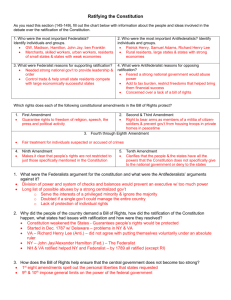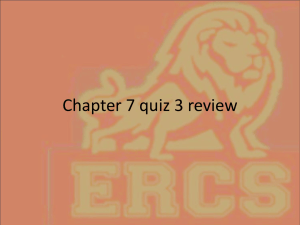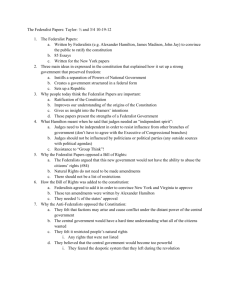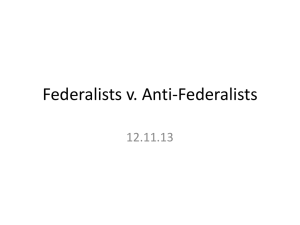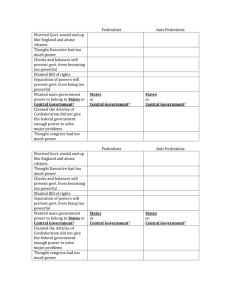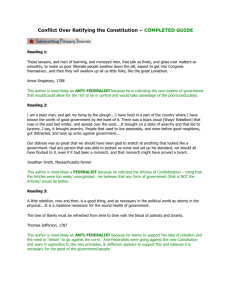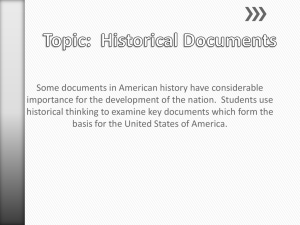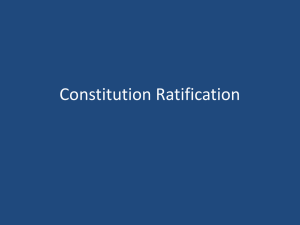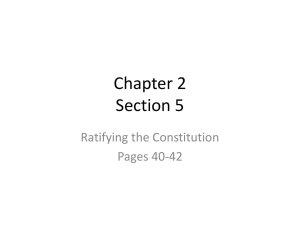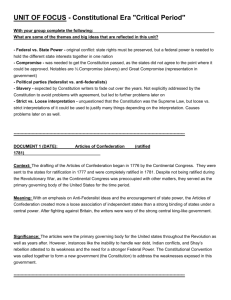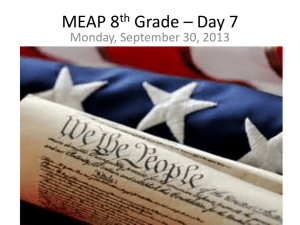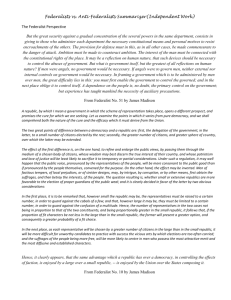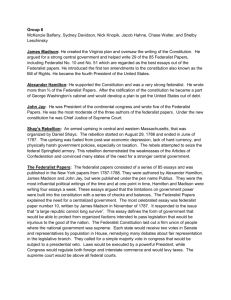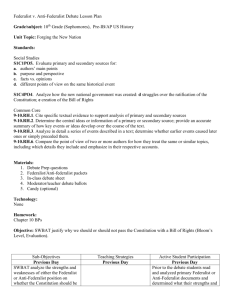File - Mr. Carter`s United States History Class
advertisement
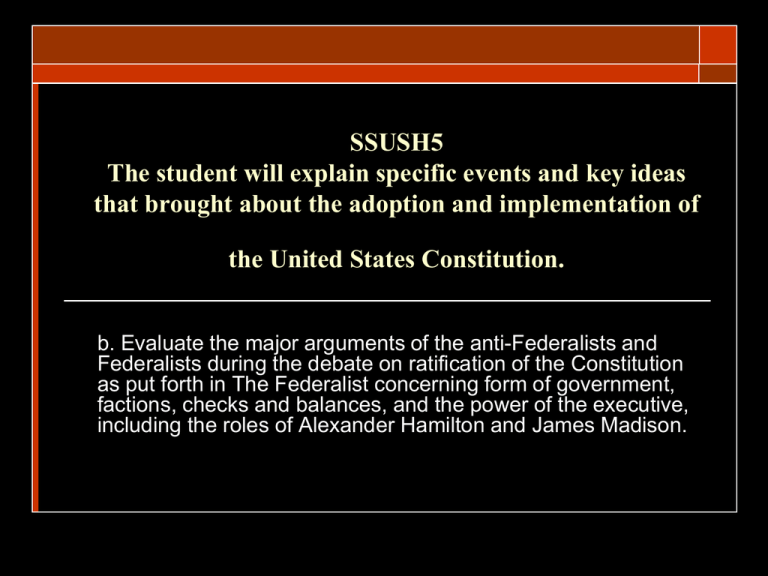
SSUSH5 The student will explain specific events and key ideas that brought about the adoption and implementation of the United States Constitution. b. Evaluate the major arguments of the anti-Federalists and Federalists during the debate on ratification of the Constitution as put forth in The Federalist concerning form of government, factions, checks and balances, and the power of the executive, including the roles of Alexander Hamilton and James Madison. Bell Ringer Name 3 causes of the American Revolution. What is a ‘founding father’ and who were some of America’s founding fathers? When was the Declaration of Independence issued in relation to the first shots of the Revolution and the publication of Thomas Paine’s ‘Common Sense’? Ratifying the Constitution In order for the Constitution to take effect, nine of the thirteen states had to ratify, or vote in favor of it Two groups emerged in the ratification debate: The Federalist, who supported ratifying the Constitution The Anti-Federalist, who opposed the Constitution The Federalists Supported the Constitution Believed that the system of checks and balances would protect the rights of the people The President would be the leader of the new government, but would have power checked by the legislative branch’s power to impeach Believed that, though the national government would have supreme power, the states would retain many of their powers Alexander Hamilton and James Madison were two of the Federalist Anti-Federalists They believed in the need for a national government, but were concerned over who would retain the supreme power to rule, the states or the national government Made up mostly of western farmers Thomas Jefferson was an Anti-Federalist The Federalist The Federalist were a collection of 85 essays written by James Madison, Alexander Hamilton, and John Jay Published in NY newspapers, The Federalist were a way of explaining to the people how the Constitution worked, and why it was needed Early political cartoon, examining the ratification of the Constitution Ratifying the Constitution Five states ratified the Constitution within a month, however many Anti-Federalists were holding out until a bill of rights was added To sway Anti-Federalist, Federalists promised to add a bill of rights if the Constitution was ratified By May 1790 all thirteen states had ratified the Constitution SSUSH 5 d. Analyze how the Bill of Rights serves as a protector of individual and states’ rights. Bell Ringer Pull out your self-generated list of questions from “John Adams: Part I” I will need 3 volunteers to write their questions on the board ASAP Once the student-generated questions are on the board you will have 5 minutes to come up with answers Be prepared to answer when called upon! Volunteers – write your questions below The Bill of Rights The Bill of Rights, drafted by James Madison, are the first 10 Amendments (or changes) to the Constitution They were added as part of an agreement between the Federalist and AntiFederalist The first 8 Amendments protect the right’s of individuals from the federal government The 9th Amendment, states that the people have other rights not listed The 10th Amendment states that powers not given to the federal government are reserved, or given to the states (STATES’ RIGHTS) 1st Amendment The 1st Amendment serves as an example of how people’s rights are protected from the federal government The 1st Amendment list the Freedom: of religion of press of speech to assemble to petition
